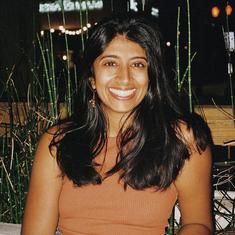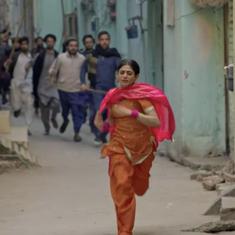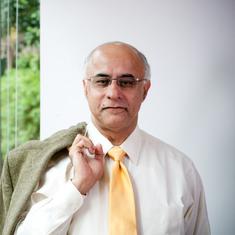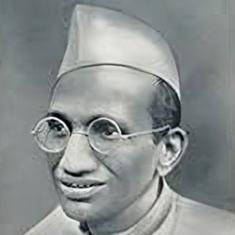Above all, KEM is fierce. Fiercely competitive, fiercely dedicated, fiercely protective, fiercely loyal.
The people of KEM form a tribe of sorts, a brawling collection of strong (and sometimes clashing) personalities, united by their pride in their collective skills and achievements.
It is no wonder then, that when I first started out on my journey of discovery of KEM Hospital and GS Medical College almost seven years ago, there was one immense achievement, one name that came up in virtually every interview, in every context. “Let me tell you about Aruna!” they would say. They were all eager to put on record how her fate had in some way affected their lives.
When our permission to make an unbiased documentary on KEM was granted, the only restriction imposed on us was access to Aruna’s room. When our presence and purpose were announced to an assembled group of Heads of Department and other key people, the very first question asked, in a worried tone, was, “Will you be telling the story of Aruna?”
Even so many decades after she fell into a coma caused by a violent attack on her one dark night, Aruna Shanbaug’s story permeates the psyche of KEM. It holds so much meaning to so many, both individually and collectively. The hospital adopted her, embraced her. Her story became their story. It shows.
It shows in the sombre look that played over the face of an eminent radiologist as he remembered his examinations of Aruna when he was just a young resident.
A philosophical professor of anatomy evoked countless small acts of kindness towards Aruna, sacrifices of time or resources willingly made by everyone from first-year nursing students to a long string of deans. “Aruna has softened many hearts,” she said comfortingly. “There is meaning from above in everything that happens on Earth.”
As proof of that, there was the pugnacious official of the nurse’s union leading a procession to bring Aruna flowers on her birthday who told me, tenderly, “We can never forget her. She is one of us.”
A brisk alumna asked, “If we don’t have the resources to do this for everyone, is it fair to do it only for Aruna, just because we love her?” A cheery, soft-eyed ward attendant, beaming with pride on the day of her retirement, said, “I was given the honour of taking care of Aruna, that was my greatest achievement. My service to her made me happy.”
The long-term patient in ward 4, Aruna’s ward, whispered to us, “Sometimes, the younger nurses cry when they come out of her room.”
A remarkable and most unusual bond
The Dean, Dr Sanjay Oak, after testifying to the Supreme Court in stout defence of his hospital against a plea brought by journalist Pinki Virani to euthanise Aruna, told a barrage of press reporters, “There can be no question of this hospital ever abandoning one of its own.”
A triumphant dance of nurses swayed through the corridors on the day the Supreme Court delivered its verdict in favour of keeping Aruna alive. “Aruna shall live!” they sang. “We will keep her comfortable!”

KEM nurses celebrate the Supreme Court verdict in Ward 4.
An unprecedented story. Aruna survived 42 years of a vegetative state without a single bedsore, they said. Tenderly cared for day in, day out; fondly treated by her colleagues on duty or off. Finally the vindication: KEM Hospital is legally designated as her next of kin in recognition of this devotion.
Where did this almost magical bond originate?
It started with the nurses. There is nothing more formidable than a nurse on a mission. Except 500 nurses on a mission. Nurses who regularly did the work of four people without (too much) complaint went on a near-strike to demand the right to care for one extra patient, Aruna Shanbaug.
That first generation of nurses were her friends and colleagues, people who knew her, who had shared work, pain and laughter with her. But slowly, as one generation took over from another, no one was left who had known her vibrant and whole, and yet the protective instinct remained, and grew to encompass the whole hospital. Why?
By all accounts, Aruna too was fierce. A fighter. Ambitious, forceful, tenacious, skillful, a dedicated perfectionist. Part of the love and admiration she received from her colleagues of all stations comes from this spirit, which embodies everything that the hospital stands for.
Like Aruna, KEM in its youth used to be strong, vital, beautiful and spunky. Like Aruna, it has been misused and abused until it became a shadow of its former self, but, again like Aruna, it has endured and persevered nevertheless.
Perhaps, imperceptibly, these parallels sank deep into the blood and bone of KEM, so that the fate of Aruna Shanbaug became the pride of the whole hospital, a visible, palpable symbol of the struggle for decency that is their most cherished, but also their most endangered tradition.
Aruna’s soul may have escaped her crippled body at last, but her spirit will always remain a vital part of KEM.
Gulserene Dastur is the director of Getting Better, a 2015 documentary about KEM Hospital.










